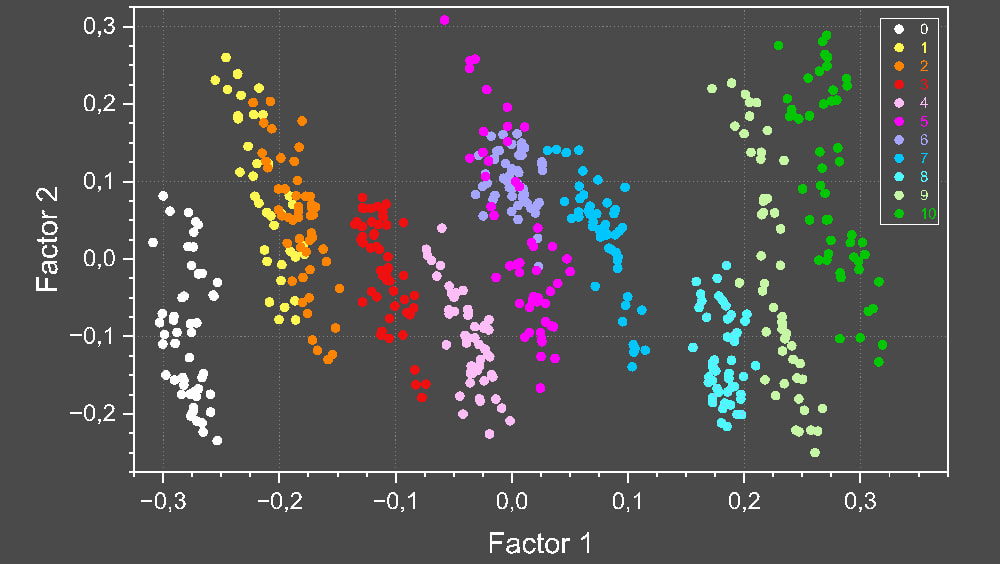Chemometrics as a tool for polymer analysis
Chemometrics is a process that combines mathematical and statistical methods with chemical knowledge and also enables the characterization of plastics and recyclates in terms of quality and individual components. This methodology is used and further developed at the SKZ Plastics Center.

Scores plot from the RecyQuant research project. (Photo: Cosima Güttler, SKZ)
SKZ uses method for quality assurance of plastics
The increasing relevance of chemometrics in the plastics industry is a result of the growing complexity of polymer materials and the growing demands for sustainability and recycling. By combining statistical and mathematical methods with chemical expertise, chemometrics not only enables precise, fast and cost-efficient analysis, but also characterization in terms of aging condition and material composition, as well as the identification and quantification of additives, fillers and pigments.
In addition, chemometrics also enables the sorting of common plastic types such as PE, PP, PVC, PET, ABS and PA using (near-infrared) spectroscopy, which is necessary to increase recycling rates and improve the reusability of plastics. It also allows for the quality control of finished products to determine critical material properties.
Multivariate data analysis
Fundamentally, chemometrics is a multivariate data analysis technique that uses the entire spectrum for evaluation instead of individual bands. Multivariate data analysis methods are therefore required to reduce the data and extract the relevant spectral information.
Qualitative analysis
A qualitative analysis can be carried out using principal component analysis (PCA). In this case, an orthogonal coordinate system is constructed based on the largest variances, in which individual objects can be described by mapping them onto it. Spectra that are similar can be assigned to different groups by transferring them into the same principal component coordinate system.
Quantitative analysis
For quantitative analysis, multivariate regression models such as Partial Least Squares Regression (PLS) are more suitable. Based on the variances in the spectra and a dependent variable, a linear regression can be carried out, which makes it possible to make predictions for further test points with regard to the corresponding variable.
Diverse fields of application
At SKZ, chemometrics is used in a wide range of applications, both in research and industrial projects. The RecyQuant research project (ZIM with ColVisTec AG, duration 2022-2024), can be cited as an example of successful implementation. The goal was to monitor and ensure the tolerable proportions of foreign polymers in the recyclate inline. To do this, a chemometric model in the NIR range was developed to predict the foreign polymer content (PE content between 0 and 10 wt%) in the base polymer (PP) for new and recycled material (see title picture).
“Increasing the efficiency of the process”
“The results of the project enabled us to prove that chemometrics is suitable for testing and ensuring recyclate quality. We look forward to expanding the areas of application and efficiency of the process in further projects in the future,” explains Cosima Güttler, Spectroscopy Scientist at SKZ.
More information about the SKZ research area of non-destructive testing


